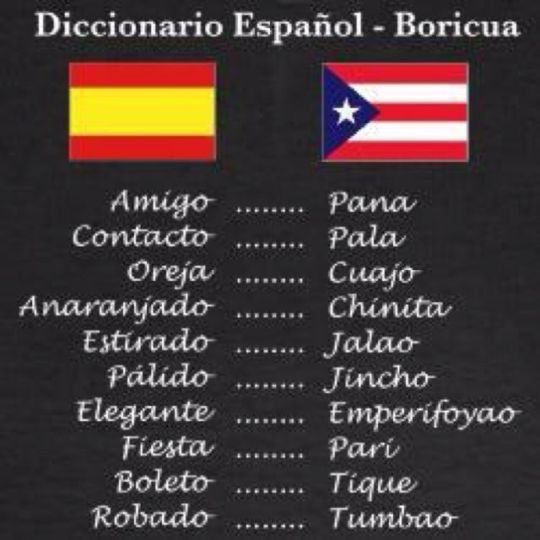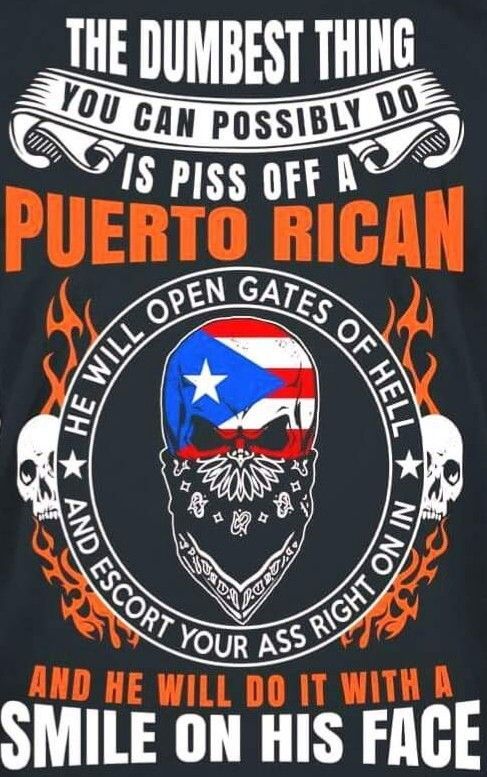Text
Puerto Rico's History
XV Century
Taíno Indians who inhabited the territory, called the island Boriken or Borinquen which means: "the great land of the valiant and noble Lord" or "land of the great lords". Today this word -used in various modifications- is still popularly used to designate the people and island of Puerto Rico. The Taíno Indians, who came from the Orinoco River in present Venezuela, inhabited the major portion of the island when the Spaniards arrived. The Taíno Indians, lived in small villages or "bateyes", and were organized in clans, led by a Cacique, or chief. They were a peaceful people who, with a limited knowledge of agriculture, lived on such domesticated tropical crops as pineapples, cassava, and sweet potatoes supplemented by seafood.
1492
On April 17, Ferdinand and Isabella of Spain signed the agreement to finance and set the terms of Columbus's voyage to the Indies. The document is known as the Capitulations of Santa Fe. The agreement established that Columbus would become the viceroy and governor of all discovered land and rights to 10% of all assets brought to Spain, among other terms.
On August 3, the fleet of three ships --the Niña, the Pinta, and the Santa María-- set forth from Palos, Spain. The first sighting of land came at dawn on October 12. They landed at San Salvador, in the Bahamas. Thinking he had reached the East Indies, Columbus referred to the native inhabitants of the island as "Indians," a term that was ultimately applied to all indigenous peoples of the New World.
1493
Christopher Columbus
After the success of Columbus's first voyage, he had little trouble convincing Ferdinand and Isabela of Spain, to follow up immediately with a second voyage. Unlike the exploratory first voyage, the second voyage was a massive colonization effort. On September 25, Christopher Columbus set sail from Cádiz, Spain with 17 ships and almost 1,500 men. The second voyage brought European livestock (horses, sheep, and cattle) to America for the first time.
On November 19, Christopher Columbus discovered the island in his second voyage to the New World. He found the island populated by as many as 50,000 Taíno or Arawak Indians. The Taíno Indians who greeted Columbus made a big mistake when they showed him gold nuggets in the river and told him to take all he wanted. Originally the newcomers called the island San Juan Bautista, for St. John the Baptist and the town was named Puerto Rico ("rich port") for its abundance of natural resources, specially gold and its excellent location. It was not until later that the two names were switched. Thanks in part to the enthusiasm of ambitious Juan Ponce de León, a lieutenant to Columbus, the city of Puerto Rico, it quickly became Spain's most important military outpost in the Caribbean.
1501
The Spanish Crown permitted export of slaves to America.
1503
Governor Nicolás de Ovando opposes the importing of slaves.
First slaves arrive in Hispañola.
1505
On March 25, Vicente Yañez Pinzón Captain was appointed "corregidor" of the island San Juan Bautista and governor of the fort that he was to construct therein.
1506
On May 20, Christopher Columbus died in Valladolid, Spain.
1508
Spanish colonization begins. King Ferdinand II of Aragon assigned Ponce de León to lead an official expedition to the island.
On January 14, first school in Puerto Rico was established in Caparra.
On June 15, 1508, Nicolas de Ovando, the viceroy of Espanola (Hispaniola), granted Ponce de Leon the privilege to explore and subjugate the island of San Juan Bautista.
On August 8, Juan Ponce de León founded the Caparra Village near the bay on the north coast, not far from the modern city of San Juan. It became the first European settlement in Puerto Rico.
Puerto Rican archeologist, Don Ricardo Alegria estimated that the island had some 30,000 inhabitants.
1509
The Spanish authorities refused to grant to Diego Columbus (Christopher's son) privileges to all discovered land, as a results, the Crown officially appointed Juan Ponce de León governor of the island.
The first repartimiento in Puerto Rico was established, this system consisted of distributing among officials and colonists fixed numbers of Indians for wage-free and forced labor.
The Spanish Crown instituted the encomienda after several priests protested against the treatment to Indians under the repartimiento system. The terms of the new agreement specified that Spaniards were obliged to pay the Indians for their labor and to teach them the Christian religion, but they soon reduced the Indians to a condition of abject slavery, claiming that the Indians were inferior and subhuman; therefore Indians were forced to work from dawn until dusk, under threat of corporal punishment and death.
In his book "La colonización de Puuerto Rico", historian Salvador Brau states that the repartimiento recorded 60,000 Indians, six years later in 1515, only 14,636 remained.
Juan Garrido is the first African identified in Puerto Rico. A free man, he arrived with the Ponce De León expedition. Garrido later participates in the colonization of Florida and serves with Spanish explorer Hernan Cortex in the conquest of Mexico.
1510
Differences between Spaniards and Taíno Indians began and conflicts soon arose as the settlers began subjugating the Taino.
The Cacique Urayoán ordered his warriors to drown Diego Salcedo to determine whether or not the Spaniards were immortal, as they believed that Spanish colonizers had divine powers. It is told that after they drowned Diego, they watched him for several days until they were sure that he was dead.
1511
The Taíno Indians' after learning through the drowning of Diego Salcedo, that the Spanish were mortal, revolted against Spaniards with no success. Ponce de León orders 6,000 shot on the spot in the town square; survivors flee to mountains or left the island.
Diego Columbus won rights to all land discovered by his father after presenting his case to the courts in Madrid. King Ferdinand ordered Ponce de Leon to be replaced as governor by Diego Columbus. Ponce de León not wishing to serve Diego, obtained title to explore the Upper Bahamas and areas to the North.
On August 8, Pope Julius II created two dioceses in Puerto Rico, the bishop of which were all suffragans of the archbishopric of Seville. The Canon of Salamanca, Alonso Manso, was appointed bishop of the Puerto Rican diocese and took possession in 1513 - the first bishop to arrive in America.
On November 11, the Spanish Crown granted a Coat of Arms to the Island of Puerto Rico.
1512
On September 26, the first school of advanced studies was established by Bishop Alonso Manso.
On December 27, the Burgos Law is issued, by Ferdinand II, the Catholic, of Aragón, regulated relations between Spaniards and the conquered Indians, particularly to ensure the spiritual and material welfare of the latter, who were often severely treated.
After the Taino upprising in 1511, a second settlement in San Germán was founded.
1513
On January 27, with the decline of Taino slaves, African slaves were introduced into the island.
On July 28th, the Complementary Declaration was established. Granting natives who were clothed, Christian, and capable could live their own lives.
On March, Ponce de León sailed into the Bahamas headed toward Florida.
1514
The Spanish Crown granted permission to Spaniards to marry native Taíno Indians.
Hernando de Peralta received permission to obtain 2 white slaves, possibly Arab or Arab Descent.
Caribe Indians attacked settlements along the banks of the Daguao and Macao rivers that had been founded by Diego Columbus.
Mona Island is officially annexed to Puerto Rico.
1515
On July, a hurricane strikes the island, killing many Indians.
1517
King Carlos V authorized the importation of 4,000 slaves to the Caribbean.
1519
Government Center is moved from Villa de Caparra to the isle of San Juan.
Puerto Rico became the general headquarters of the Inquisition, after Pope Leo X declared the island the first ecclesiastical headquarters in the New World.
1520
On July 12, King Charles I of Spain issued a royal decree collectively emancipating the remaining Taíno population. The order came into place due to the large number of Taino deaths attributed to the continuing bondage systems. A population of 60,000 was reduced to 4,000 in seven years.
1521
Juan Ponce de Leon
Caribe Indians attacked the south coast.
The city and the Island exchanged names, and the City of San Juan Bautista de Puerto Rico became the official capital.
Casa Blanca (White House) was built. The house was owned by Ponce de León's family until the late 18th century.
The ever arriving Spaniards settlers, many of them gold-seekers, brought no women on their ships. To populate the country, the Spaniard took Indian women. With the arrival of African slaves, other elements were added. This historic intermingling has resulted in a contemporary Puerto Rico without racial problems.
Juan Ponce de León organized an expedition, setting out for Florida, where he suffered serious injuries. He took refuge on La Habana, Cuba, where he died.
1522
On January 24, San Jose Church is founded, it is the oldest church still in use in America.
1523
The first sugar cane processing plant is built.
The Convento de Santo Domingo (Dominican Friars Community) was built. The convent organized the first library in the island.
1524
The first hospital was built, called Concepción, by Bishop Alonso Manso.
1528
On their attempt to capture the Island the French attacked many settlements. On October 11, the French sacked and burned San Germán. All the other first settlements-Guánica, Sotomayor, Daguao and Loíza-had disappeared. Only the capital remained.
1530
Sugar became the most important agricultural product.
Governor Francisco Manuel de Landó conducted the first census. The Taino population had almost vanished. Lando's census reports only 1148 Tainos remaining in the island.
On July 26, August 23, and August 31, within 6 weeks three storms strikes the island.
1532
The construction of Santa Catalina Palace, the governors house, began. Later the name was changed to La Fortaleza.
1533
On July 26, a hurricane strikes the island.
A month later, on August 23, another hurricane strikes the island.
1537
On July, a hurricane strikes the island. Few weeks later, on August another hurricane strikes the island. Many slaves died.
1539
Concerned about potential threats from European enemies and recognizing the strategic importance of Puerto Rico, Spain began constructing massive defenses around San Juan. The construction of San Felipe del Morro Castle began. The fort featured 18-foot-thick walls; San Cristóbal and San Geronimo Forts also garrisoned troops, were built with the financial subsidy from the Mexican mines. Next the Spaniards constructed a wall, parts of which still survive, around the entire city.
1542
The coconut tree was introduced to the island. The coconut is indigenous to the Indo-Malaysian region. It spread by sea currents with the average maximum distance of 3,000 miles, on which the coconut will remain afloat and still remain viable. Considering these limitations there were no or little chance of a coconut seed reach the New World. Most authorities agree that the coconut was introduced to the New World by Portuguese and Spanish traders.
1544
The second hospital was built, called San Ildefonso.
Charles V, Holy Roman Emperor and King of Spain decreed that the natives be as free. In reality though, the declaration of equality did not end the colonial social class system.
1559
Juan Ponce de León remains were brought to San Juan.
1570
The gold mines were declared depleted.
1587
Engineers Juan de Tejada and Juan Bautista Antonelli lay out the main design for El Morro still seen today.
1595
On November 22, Sir Francis Drake, hero of the battle of the Spanish Armada, with 26 vessels, in the company of Sir John Hawkins, tried fruitlessly to conquer the island and set San Juan city on fire (battlemap).
1598
On June 15, the British Navy led by George Clifford, 3rd Earl of Cumberland, landing in Santurce, conquered the island and held it for several months, it is forced to abandon his conquest owing to an outbreak of plague among his troops (battlemap).
Ginger replaces sugar as Puerto Rico's main cash crop.
1599
Spain sent 400 soldiers, 46 cannon and a new governor, Alonso de Mercado, to rebuild San Juan.
1493
Christopher Columbus
After the success of Columbus's first voyage, he had little trouble convincing Ferdinand and Isabela of Spain, to follow up immediately with a second voyage. Unlike the exploratory first voyage, the second voyage was a massive colonization effort. On September 25, Christopher Columbus set sail from Cádiz, Spain with 17 ships and almost 1,500 men. The second voyage brought European livestock (horses, sheep, and cattle) to America for the first time.
On November 19, Christopher Columbus discovered the island in his second voyage to the New World. He found the island populated by as many as 50,000 Taíno or Arawak Indians. The Taíno Indians who greeted Columbus made a big mistake when they showed him gold nuggets in the river and told him to take all he wanted. Originally the newcomers called the island San Juan Bautista, for St. John the Baptist and the town was named Puerto Rico ("rich port") for its abundance of natural resources, specially gold and its excellent location. It was not until later that the two names were switched. Thanks in part to the enthusiasm of ambitious Juan Ponce de León, a lieutenant to Columbus, the city of Puerto Rico, it quickly became Spain's most important military outpost in the Caribbean.
1501
The Spanish Crown permitted export of slaves to America.
1503
Governor Nicolás de Ovando opposes the importing of slaves.
First slaves arrive in Hispañola.
1505
On March 25, Vicente Yañez Pinzón Captain was appointed "corregidor" of the island San Juan Bautista and governor of the fort that he was to construct therein.
1506
On May 20, Christopher Columbus died in Valladolid, Spain.
1508
Spanish colonization begins. King Ferdinand II of Aragon assigned Ponce de León to lead an official expedition to the island.
On January 14, first school in Puerto Rico was established in Caparra.
On June 15, 1508, Nicolas de Ovando, the viceroy of Espanola (Hispaniola), granted Ponce de Leon the privilege to explore and subjugate the island of San Juan Bautista.
On August 8, Juan Ponce de León founded the Caparra Village near the bay on the north coast, not far from the modern city of San Juan. It became the first European settlement in Puerto Rico.
Puerto Rican archeologist, Don Ricardo Alegria estimated that the island had some 30,000 inhabitants.
1509
The Spanish authorities refused to grant to Diego Columbus (Christopher's son) privileges to all discovered land, as a results, the Crown officially appointed Juan Ponce de León governor of the island.
The first repartimiento in Puerto Rico was established, this system consisted of distributing among officials and colonists fixed numbers of Indians for wage-free and forced labor.
The Spanish Crown instituted the encomienda after several priests protested against the treatment to Indians under the repartimiento system. The terms of the new agreement specified that Spaniards were obliged to pay the Indians for their labor and to teach them the Christian religion, but they soon reduced the Indians to a condition of abject slavery, claiming that the Indians were inferior and subhuman; therefore Indians were forced to work from dawn until dusk, under threat of corporal punishment and death.
In his book "La colonización de Puuerto Rico", historian Salvador Brau states that the repartimiento recorded 60,000 Indians, six years later in 1515, only 14,636 remained.
Juan Garrido is the first African identified in Puerto Rico. A free man, he arrived with the Ponce De León expedition. Garrido later participates in the colonization of Florida and serves with Spanish explorer Hernan Cortex in the conquest of Mexico.
1510
Differences between Spaniards and Taíno Indians began and conflicts soon arose as the settlers began subjugating the Taino.
The Cacique Urayoán ordered his warriors to drown Diego Salcedo to determine whether or not the Spaniards were immortal, as they believed that Spanish colonizers had divine powers. It is told that after they drowned Diego, they watched him for several days until they were sure that he was dead.
1511
The Taíno Indians' after learning through the drowning of Diego Salcedo, that the Spanish were mortal, revolted against Spaniards with no success. Ponce de León orders 6,000 shot on the spot in the town square; survivors flee to mountains or left the island.
Diego Columbus won rights to all land discovered by his father after presenting his case to the courts in Madrid. King Ferdinand ordered Ponce de Leon to be replaced as governor by Diego Columbus. Ponce de León not wishing to serve Diego, obtained title to explore the Upper Bahamas and areas to the North.
On August 8, Pope Julius II created two dioceses in Puerto Rico, the bishop of which were all suffragans of the archbishopric of Seville. The Canon of Salamanca, Alonso Manso, was appointed bishop of the Puerto Rican diocese and took possession in 1513 - the first bishop to arrive in America.
On November 11, the Spanish Crown granted a Coat of Arms to the Island of Puerto Rico.
1512
On September 26, the first school of advanced studies was established by Bishop Alonso Manso.
On December 27, the Burgos Law is issued, by Ferdinand II, the Catholic, of Aragón, regulated relations between Spaniards and the conquered Indians, particularly to ensure the spiritual and material welfare of the latter, who were often severely treated.
After the Taino upprising in 1511, a second settlement in San Germán was founded.
1513
On January 27, with the decline of Taino slaves, African slaves were introduced into the island.
On July 28th, the Complementary Declaration was established. Granting natives who were clothed, Christian, and capable could live their own lives.
On March, Ponce de León sailed into the Bahamas headed toward Florida.
1514
The Spanish Crown granted permission to Spaniards to marry native Taíno Indians.
Hernando de Peralta received permission to obtain 2 white slaves, possibly Arab or Arab Descent.
Caribe Indians attacked settlements along the banks of the Daguao and Macao rivers that had been founded by Diego Columbus.
Mona Island is officially annexed to Puerto Rico.
1515
On July, a hurricane strikes the island, killing many Indians.
1517
King Carlos V authorized the importation of 4,000 slaves to the Caribbean.
1519
Government Center is moved from Villa de Caparra to the isle of San Juan.
Puerto Rico became the general headquarters of the Inquisition, after Pope Leo X declared the island the first ecclesiastical headquarters in the New World.
1520
On July 12, King Charles I of Spain issued a royal decree collectively emancipating the remaining Taíno population. The order came into place due to the large number of Taino deaths attributed to the continuing bondage systems. A population of 60,000 was reduced to 4,000 in seven years.
1521
Juan Ponce de Leon
Caribe Indians attacked the south coast.
The city and the Island exchanged names, and the City of San Juan Bautista de Puerto Rico became the official capital.
Casa Blanca (White House) was built. The house was owned by Ponce de León's family until the late 18th century.
The ever arriving Spaniards settlers, many of them gold-seekers, brought no women on their ships. To populate the country, the Spaniard took Indian women. With the arrival of African slaves, other elements were added. This historic intermingling has resulted in a contemporary Puerto Rico without racial problems.
Juan Ponce de León organized an expedition, setting out for Florida, where he suffered serious injuries. He took refuge on La Habana, Cuba, where he died.
1522
On January 24, San Jose Church is founded, it is the oldest church still in use in America.
1523
The first sugar cane processing plant is built.
The Convento de Santo Domingo (Dominican Friars Community) was built. The convent organized the first library in the island.
1524
The first hospital was built, called Concepción, by Bishop Alonso Manso.
1528
On their attempt to capture the Island the French attacked many settlements. On October 11, the French sacked and burned San Germán. All the other first settlements-Guánica, Sotomayor, Daguao and Loíza-had disappeared. Only the capital remained.
1530
Sugar became the most important agricultural product.
Governor Francisco Manuel de Landó conducted the first census. The Taino population had almost vanished. Lando's census reports only 1148 Tainos remaining in the island.
On July 26, August 23, and August 31, within 6 weeks three storms strikes the island.
1532
The construction of Santa Catalina Palace, the governors house, began. Later the name was changed to La Fortaleza.
1533
On July 26, a hurricane strikes the island.
A month later, on August 23, another hurricane strikes the island.
1537
On July, a hurricane strikes the island. Few weeks later, on August another hurricane strikes the island. Many slaves died.
1539
Concerned about potential threats from European enemies and recognizing the strategic importance of Puerto Rico, Spain began constructing massive defenses around San Juan. The construction of San Felipe del Morro Castle began. The fort featured 18-foot-thick walls; San Cristóbal and San Geronimo Forts also garrisoned troops, were built with the financial subsidy from the Mexican mines. Next the Spaniards constructed a wall, parts of which still survive, around the entire city.
1542
The coconut tree was introduced to the island. The coconut is indigenous to the Indo-Malaysian region. It spread by sea currents with the average maximum distance of 3,000 miles, on which the coconut will remain afloat and still remain viable. Considering these limitations there were no or little chance of a coconut seed reach the New World. Most authorities agree that the coconut was introduced to the New World by Portuguese and Spanish traders.
1544
The second hospital was built, called San Ildefonso.
Charles V, Holy Roman Emperor and King of Spain decreed that the natives be as free. In reality though, the declaration of equality did not end the colonial social class system.
1559
Juan Ponce de León remains were brought to San Juan.
1570
The gold mines were declared depleted.
1587
Engineers Juan de Tejada and Juan Bautista Antonelli lay out the main design for El Morro still seen today.
1595
On November 22, Sir Francis Drake, hero of the battle of the Spanish Armada, with 26 vessels, in the company of Sir John Hawkins, tried fruitlessly to conquer the island and set San Juan city on fire (battlemap).
1598
On June 15, the British Navy led by George Clifford, 3rd Earl of Cumberland, landing in Santurce, conquered the island and held it for several months, it is forced to abandon his conquest owing to an outbreak of plague among his troops (battlemap).
Ginger replaces sugar as Puerto Rico's main cash crop.
1599
Spain sent 400 soldiers, 46 cannon and a new governor, Alonso de Mercado, to rebuild San Juan.
1600 - 1797
1600
San Juan is enclosed by very formidable ramparts in the Caribbean.
1616
Arecibo and San Blás de Illescas (later called Coamo) were founded.
On September 15, a hurricane strikes the island.
1619
Bernardo de Balbuena became Bishop of Puerto Rico.
1625
On September 25, Holland attacks San Juan, under the leadership of Boudewijn Hendrick (Balduino Enrico), besieging El Morro and La Fortaleza, burning the city, but the Spanish repel the Dutch troops (battlemap).
1626
On September 15, a hurricane strikes the island.
A month later, on October, another hurricane strikes the island.
1634
King Philip IV of Spain began fortifying the San Cristóbal Fort (the largest Spanish fort in the New World), along with six fortresses linked by a line of sandstone walls surrounding the city.
1639
The San Juan Gate was built as the entry to San Juan.
1648
In San Germán, Porta Coeli Catholic Church was finished.
1673
A hurricane strikes the island.
1692
Ponce is founded.
1702
The British attack Arecibo, with no success.
1720
A hurricane strikes the island.
1722
On August 28, a hurricane strikes the island.
1740
On September 11-12, a hurricane strikes the island.
1742
On October 27-28, a hurricane strikes the island.
1765
Commissioned by Charles III of Spain to investigate contraband activity, Lieutenant General Alexander O'Reilly conducted a census. Puerto Rico's population had reached 44,883, of whom 5,037 were slaves, making an 11.2 percent, a very low ratio, considered the lowest for the Caribbean.
1770
Cockfighting began in the island.
1772
On August 28, a hurricane strikes the island, accompanied by an earthquake.
1780
On June 13, a hurricane strikes the island.
1781
On August 1st, a hurricane strikes the island.
1783
John Adams, then Secretary of State, and who would later become the second President of United States, proposed the political annexation of Cuba and Puerto Rico to the United States.
1785
On August 24-29, a hurricane strikes the island.
1786
The first History of Puerto Rico was published by Brother Iñigo Abbad y Lasierra. The book titled "Historia Geográfica, Civil y Política de Puerto Rico was published in Madrid, constitutes a complete history of Puerto Rico from the time of its discovery in 1493 until 1783.
1787
On May 2, an earthquake occurred with an approximate magnitude of 8 on the Richter scale.
Alexander Hamilton, then Secretary of the Treasury of the United States, proposed the annexation to the United States of Cuba, Puerto Rico, the western territories and the entire American Hemisphere.
1797
The French and Spanish declare war on England. The British attempt to conquer the island, an invasion by 7,000 British troops and 64 warships under the command of General Ralph Abercromby, attacked San Juan. Captain General Don Ramon de Castro and his army resisted the attack

7 notes
·
View notes
Photo
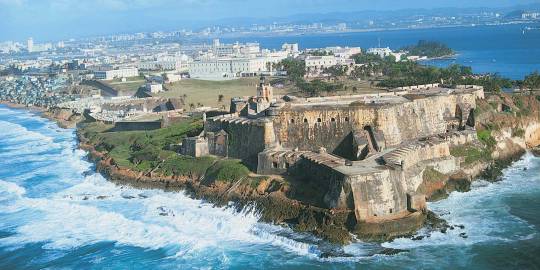
El Morro was initially fortified in 1539 and completed in 1589. Rising 140 feet above the sea, its 18-foot-thick wall proved a formidable defense. It fell only once, in 1538, to a land assault by the Earl of Cumberland's forces. The fort is a maze of tunnels, dungeons, barracks, outposts and ramps. Many restorations and expansions contributed to the imposing structure it is today. The area was designated a National Historic Site in February 1949 with 74 total acres.
Tours, orientation, and video presentation are available in English and Spanish. Open daily 9am-5pm. Free admission.
While visiting El Morro, I have few more suggestions on how to spend a day in Old San Juan.
0 notes
Photo

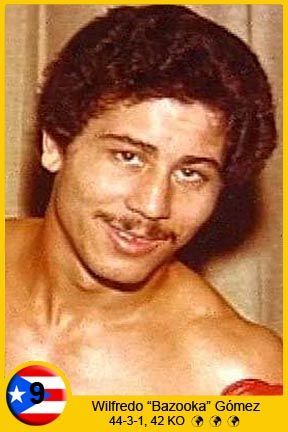
Name: Wilfredo Gomez
Alias: Bazooka
Born: 1956-10-29
Hometown: Las Monjas, Puerto Rico
Birthplace: Santurce, Puerto Rico
Stance: Orthodox
Height: 166cm
Reach: 169cm
Pro Boxer: Record
Amateur Boxer: Record
0 notes
Photo







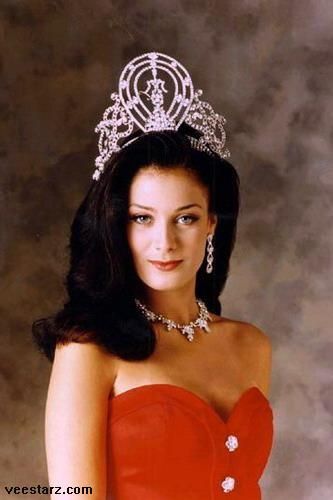

Marisol Malaret, Miss Puerto Rico 1970, was the first Puerto Rican to win the Miss Universe title. The four other Puerto Rican delegates who have won the Miss Universe title are Deborah Carthy-Deu (1985), Dayanara Torres (1993), Denise Quiñones (2001), and Zuleyka Rivera (2006).
1 note
·
View note
Photo


Taíno Indians, a subgroup of the Arawakan Indians (a group of American Indians in northeastern South America), inhabited the Greater Antilles (comprising Cuba, Jamaica, Hispaniola [Haiti and the Dominican Republic], and Puerto Rico) in the Caribbean Sea at the time when Christopher Columbus' arrived to the New World.
The Taíno culture impressed both the Spanish (who observed it) and modern sociologists. The Arawakan achievements included construction of ceremonial ball parks whose boundaries were marked by upright stone dolmens, development of a universal language, and creation of a complicated religious cosmology. There was a hierarchy of deities who inhabited the sky; Yocahu was the supreme Creator. Another god, Jurakán, was perpetually angry and ruled the power of the hurricane. Other mythological figures were the gods Zemi and Maboya. The zemis, a god of both sexes, were represented by icons in the form of human and animal figures, and collars made of wood, stone, bones, and human remains. Taíno Indians believed that being in the good graces of their zemis protected them from disease, hurricanes, or disaster in war. They therefore served cassava (manioc) bread as well as beverages and tobacco to their zemis as propitiatory offerings. Maboyas, on the other hand, was a nocturnal deity who destroyed the crops and was feared by all the natives, to the extent that elaborate sacrifices were offered to placate him.
Myths and traditions were perpetuated through ceremonial dances (areytos), drumbeats, oral traditions, and a ceremonial ball game played between opposing teams (of 10 to 30 players per team) with a rubber ball; winning this game was thought to bring a good harvest and strong, healthy children.
0 notes
Photo
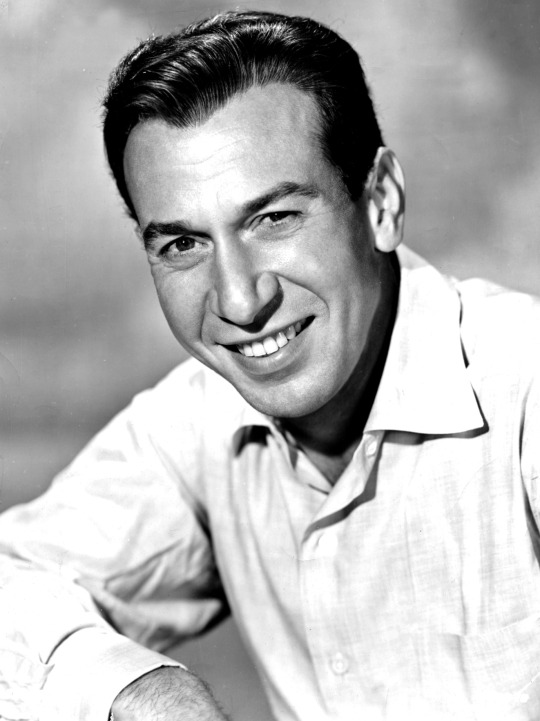
I always thought that our loved Rita Moreno was the first Puerto Rican to win an Acadamy Award of Arts and Science. Oscar. But no it was Mr. Jose Ferrer
José Vicente Ferrer de Otero y Cintró
(January 8, 1912 – January 26, 1992), known as José Ferrer, was a Puerto Rican actor and theatre and film director. He was the first Puerto Rican-born actor and the first Hispanic actor to win an Academy Award (in 1950 for Cyrano de Bergerac). He is well known today for his performance as the defense attorney in The Caine Mutiny.
In 1947, Ferrer won the Tony Award for his theatrical performance of Cyrano de Bergerac, and in 1952, he won the Distinguished Dramatic Actor Award for The Shrike, and also the Outstanding Director Award for directing the plays The Shrike, The Fourposter, and Stalag 17.
1 note
·
View note
